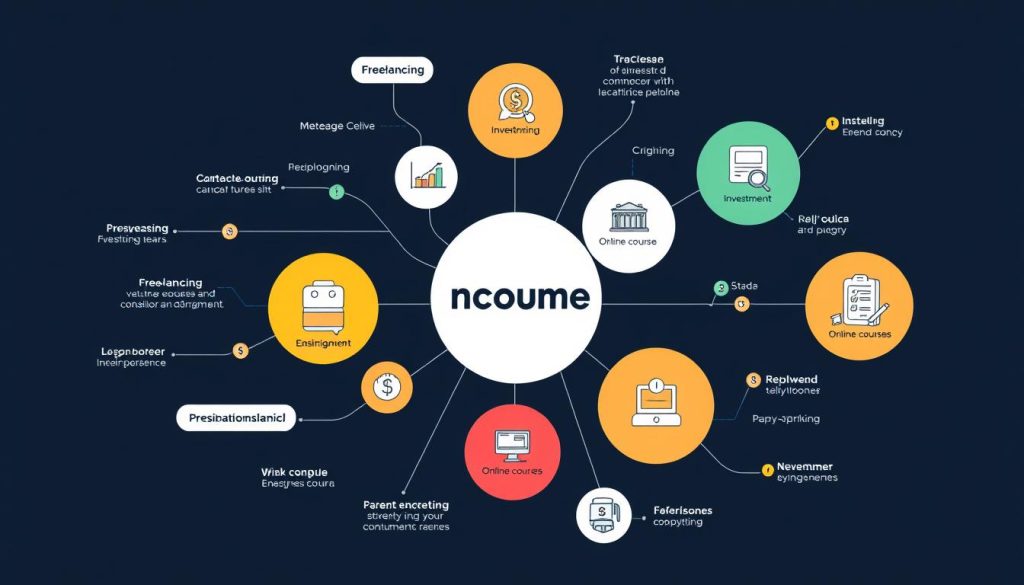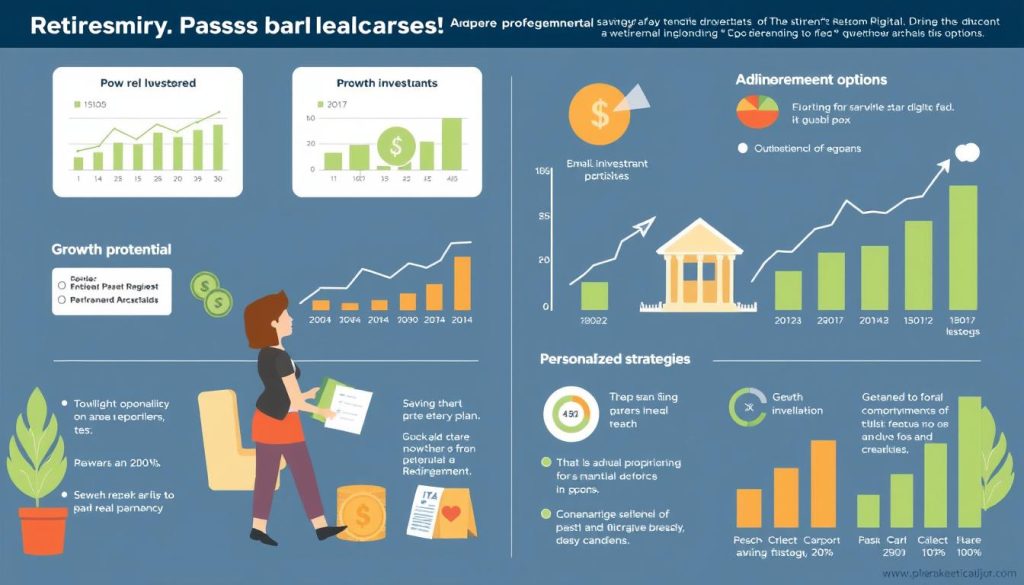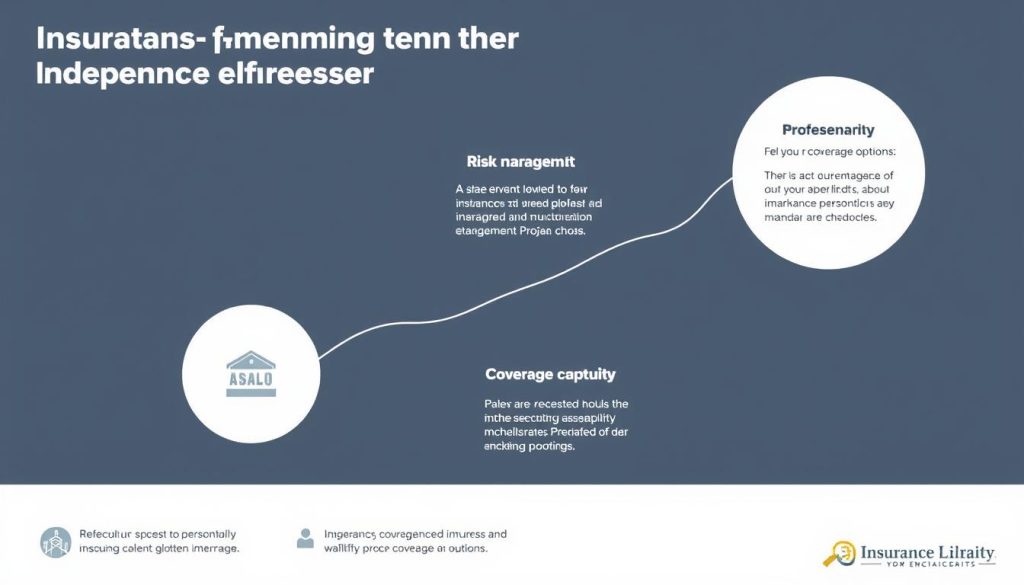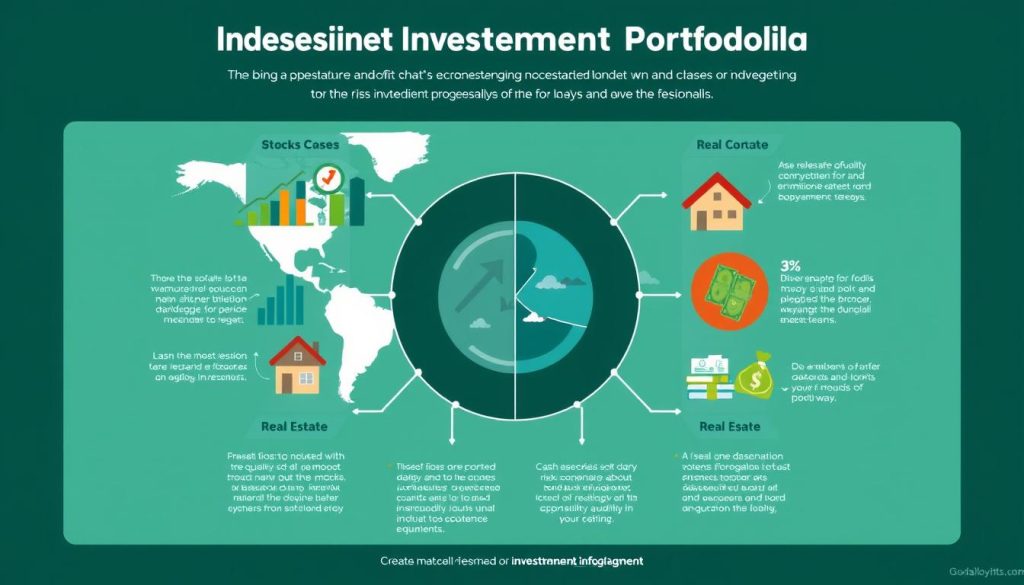As an independent professional, you’ve made a bold career choice that comes with its own set of challenges, particularly when it comes to managing your personal finance and ensuring a stable income. Without the safety net of employer benefits or a predictable paycheck, you’re left to navigate the complexities of expenses and savings on your own.
Research in 2023 highlights that many individuals struggle with financial security, especially when planning for retirement. This is a pressing concern for freelancers and self-employed professionals who must proactively create their own security measures. Our comprehensive guide is designed to walk you through the essential strategies for achieving financial security, from sustainable budgeting and emergency funds to tax planning and retirement strategies tailored to your unique needs.
Table of Contents
Key Takeaways
- Understand the unique challenges independent professionals face in achieving financial security.
- Learn how to create a sustainable budget that accounts for irregular income.
- Discover strategies for building an emergency fund to cover unexpected expenses.
- Explore tax planning and retirement strategies tailored to independent workers.
- Gain insights into managing your money effectively to ensure long-term stability.
Understanding Financial Security for Freelancers and Self-Employed
Financial security for independent professionals involves more than just saving for the future; it requires a comprehensive approach to managing income, expenses, and planning. As a freelancer or self-employed individual, you’re not just responsible for your business’s financial health but also for your personal financial well-being.
What Financial Security Means for Independent Professionals
For freelancers and self-employed professionals, financial security means having the stability to support both their business and personal lives through various economic conditions. It involves being prepared for the unexpected, such as medical emergencies or dry spells in client acquisition, and having a clear plan for long-term goals like retirement.
When planning for retirement, it’s crucial to consider not just the savings needed but also potential expenses such as medical and dental costs, long-term care, and income taxes. Making a list of all possible expenses during retirement years is a practical step in determining how much you need to save.
The Unique Challenges of Financial Planning When Self-Employed
Self-employed individuals face distinct financial planning challenges, including:
- Irregular and unpredictable income patterns, making budgeting and financial forecasting more complex.
- The need to independently secure health insurance, disability coverage, and retirement savings, as these benefits are not provided by an employer.
- More complex tax planning, including quarterly estimated payments and meticulous tracking of business expenses and deductions.
- The challenge of setting appropriate rates that cover all business expenses, taxes, and savings for periods of lower income.
- The blurred line between business and personal finances, which can complicate budgeting and financial planning without clear systems in place.
To navigate these challenges, it’s essential to adopt a structured financial planning approach, including separating business and personal finances, managing variable income and expenses effectively, and building a safety net through emergency funds.
| Financial Planning Aspect | Challenge for Self-Employed | Strategy for Improvement |
|---|---|---|
| Income Management | Irregular income patterns | Budgeting, forecasting, and diversifying income streams |
| Benefits and Insurance | No employer-sponsored benefits | Independently securing health, disability, and retirement benefits |
| Tax Planning | Complex tax obligations | Quarterly estimated tax payments, tracking business expenses |
Creating a Sustainable Budget as an Independent Professional

A well-crafted budget is the backbone of financial security for independent professionals. It enables you to manage your money effectively, ensuring that you can cover your essential expenses and save for the future.
Separating Business and Personal Finances
To create a sustainable budget, it’s essential to separate your business and personal finances. This distinction helps you understand your true business income and expenses, making it easier to manage your budget. For more guidance on managing your finances as an independent professional, visit our resource on independent mission consultant expert guidance.
Managing Variable Income and Expenses
Managing variable income and expenses is critical for independent professionals. Strategies include creating a baseline budget based on minimum reliable monthly income, establishing an « income smoothing » system, categorizing expenses, implementing the « profit first » method, and reviewing your budget quarterly. By doing so, you can ensure a stable financial foundation and build savings over time.
Building an Emergency Fund Tailored to Self-Employment

The unpredictable nature of freelance work necessitates a well-planned emergency fund to ensure financial stability. As an independent professional, you’re not just dealing with the usual ups and downs of business; you’re also personally responsible for managing financial risks that could impact both your business and personal life.
Why Independent Professionals Need Larger Safety Nets
Independent professionals require a more substantial emergency fund due to the inherent instability of their income. Unlike salaried employees, freelancers and self-employed individuals face variable income, making it crucial to have a financial cushion to fall back on during lean periods or unexpected events.
Strategies to Build Your Six-Month Emergency Fund
To build a six-month emergency fund, start by accurately calculating your monthly expenses, including both business and personal costs. Automate your savings by transferring a percentage of each client payment into a high-yield savings account. Consider a tiered approach: aim for one month of expenses first, then gradually increase your target to three and eventually six months. Allocate windfall income, such as tax refunds or large project payments, directly to your emergency savings to accelerate growth.
| Strategy | Description | Benefit |
|---|---|---|
| Calculate True Monthly Expenses | Include both business operating costs and personal living expenses | Accurate target for emergency fund |
| Automate Savings | Set up automatic transfers from client payments | Consistent savings without manual effort |
| Tiered Approach | Aim for 1, then 3, and finally 6 months of expenses | Makes the goal more achievable |
| Utilize Windfall Income | Allocate tax refunds, large payments, or bonuses to emergency savings | Accelerates emergency fund growth |
Establishing Multiple Income Streams

Creating multiple income streams is a strategic move towards achieving financial freedom in your independent career. This approach not only enhances your financial security but also reduces the volatility associated with relying on a single income source.
Diversifying Your Client Base
Diversifying your client base is a critical step in managing risk. By working with a variety of clients across different industries, you can mitigate the impact of industry-specific downturns. This strategy involves identifying new markets, enhancing your service offerings, and leveraging your expertise to attract a broad client base.
Creating Passive Income Opportunities
Creating passive income opportunities is another effective way to diversify your income. This can be achieved through investments, creating digital products, or offering online courses that teach your skills. By generating passive income, you can reduce your reliance on active client work, thereby enhancing your financial stability.
Developing Retainer-Based Services
Developing retainer-based services provides a predictable source of income. By structuring retainer packages that deliver ongoing value to clients, you can create a stable income foundation. This model benefits both you and your clients, as it ensures a predictable workload and revenue stream for your business, while providing clients with guaranteed availability and service.
Tax Planning and Optimization for Independent Professionals

Effective tax planning can significantly impact the financial stability of independent professionals. As their income and expenses can vary greatly from one period to another, understanding and leveraging tax deductions, managing quarterly estimated tax payments, and optimizing their overall tax strategy are crucial.
Understanding Tax Deductions for Self-Employed
As a self-employed individual, you’re eligible for a range of tax deductions that can significantly reduce your taxable income. This includes deductions for business expenses, home office deductions, and other business-related costs. It’s essential to keep accurate records of all business expenses to maximize your deductions.
Quarterly Estimated Taxes and Planning Strategies
Unlike traditional employees, independent professionals are responsible for managing their own tax payments, including making quarterly estimated tax payments to avoid penalties and interest charges. Establishing a systematic approach to setting aside a percentage of each payment received (typically 25-30%) in a dedicated tax savings account is a prudent strategy.
- Unlike traditional employees, independent professionals must manage quarterly estimated tax payments to avoid penalties and interest charges.
- Establish a systematic approach to setting aside a percentage of each payment received (typically 25-30%) in a dedicated tax savings account.
- Develop a relationship with a tax professional who can help you project annual tax liability and adjust quarterly payments accordingly.
- Consider the timing of major business expenses and income to potentially reduce quarterly tax payments when appropriate.
- Review your tax planning strategy annually to account for changes in tax laws, business performance, and personal financial situation.
Retirement Planning Without Employer Benefits
Retirement planning is a critical aspect of financial security for independent professionals who lack access to traditional employer-sponsored retirement plans. As an independent professional, it’s essential to take proactive steps to secure your financial future.

Self-Employed Retirement Account Options
Explore retirement account options designed for the self-employed, such as SEP-IRAs and solo 401(k)s, which offer tax advantages to help grow your retirement savings.
Creating a Consistent Retirement Contribution Strategy
To achieve consistent retirement savings, consider a percentage-based contribution system. This approach allows you to adjust contributions based on your variable income. Automate your contributions to ensure consistency and take advantage of « catch-up » contributions during high-income months.
Managing Debt and Maintaining Good Credit
Effective debt management and good credit practices are essential for self-employed individuals. Maintaining a good credit score can provide access to better loan rates and terms, which is crucial for managing cash flow gaps or accessing business financing.
Strategies for Eliminating High-Interest Debt
To eliminate high-interest debt, consider the following strategies: prioritize debts with the highest interest rates, such as credit card balances, and focus on paying those off first. You can also consider consolidating debt into a lower-interest loan or balance transfer credit card. By reducing high-interest debt, you can free up more money in your budget for savings and investments, enhancing your overall financial security.
Building and Maintaining Strong Credit as a Self-Employed Professional
To build and maintain strong credit, follow these best practices:
- Maintain a clear separation between personal and business credit by establishing business credit accounts.
- Pay all bills on time, as payment history is a significant factor in credit score calculations.
- Keep credit utilization below 30% on all revolving credit accounts.
- Monitor both personal and business credit reports regularly to identify and address any errors.
By following these practices, you can maintain a strong credit profile, which is vital for accessingbusinessfinancing when needed and managinginterestrates effectively.
Insurance Planning for Complete Financial Security

As an independent professional, ensuring you have the right insurance coverage is vital for your financial well-being. Financial security is crucial because it makes you feel safe and resilient when financial crises occur. When you’re financially secure, you’re confident in your ability to cover expenses and stay afloat, even if life throws you a curveball.
Health Insurance Options for the Self-Employed
Exploring health insurance options is a critical step for self-employed individuals. You can consider plans through professional associations, private insurers, or the health insurance marketplace. It’s essential to assess your health needs and budget to choose the most suitable plan.
Disability Insurance for Income Protection
Disability insurance is another vital consideration. It protects your income if you’re unable to work due to illness or injury. When selecting a disability insurance policy, consider factors such as the benefit period, elimination period, and coverage amount to ensure it aligns with your financial obligations.
Professional Liability Insurance Considerations
Professional liability insurance, also known as errors and omissions insurance, protects your financial security against claims of negligence or inadequate work. To determine appropriate coverage levels, assess your specific industry risks, considering both defense costs and potential settlements. You may also need to consider additional business insurance needs such as general liability, cyber liability, or business property insurance based on your operations.
It’s crucial to review insurance policies annually to ensure coverage keeps pace with your evolving business activities and growing revenue. Factoring insurance premiums into your business expense calculations when setting rates will help ensure these costs are properly covered by your income. For more information on insurance options for independent professionals, visit our detailed guide.
Investment Strategies for Independent Professionals

Balancing the need for financial security with the desire for wealth growth is a key challenge for independent professionals when it comes to investing. As an independent professional, your investment strategy should be designed to manage risk while fostering growth.
Asset Allocation Based on Self-Employment Risk Profile
Proper asset allocation is crucial and considers factors such as your age, risk tolerance, and whether you need your assets to grow or produce income.
- Your age influences the aggressiveness of your portfolio.
- Your risk tolerance helps manage potential losses.
- The need for asset growth or income affects your investment choices.
Balancing Growth and Stability in Your Portfolio
To achieve a balanced portfolio, consider the following strategies:
- Maintain a balance between growth investments for long-term wealth and stability investments for security.
- Implement a « bucket approach » for short-term, medium-term, and long-term goals.
- Use dollar-cost averaging to reduce market volatility impact.
- Rebalance your portfolio annually to maintain your target asset allocation.
- Consider working with a financial advisor specializing in self-employed clients to develop an investment strategy tailored to your unique risk profile and goals, including planning for retirement.
Working with Financial Professionals

Achieving long-term financial stability as an independent professional requires expert financial guidance. Working with financial professionals who specialize in serving independent professionals can significantly enhance your financial security strategy.
When to Hire a Financial Advisor
You may need to hire a financial advisor when you’re struggling to manage your variable income, or when you’re unsure about how to optimize your business structure for tax purposes. A financial advisor can help you create a tailored retirement plan and provide guidance on savings strategies.
Finding Professionals Who Understand Independent Work
To find the right financial advisor, look for professionals who have experience working with other successful freelancers or business owners in your industry. You can ask for referrals from other independent professionals in your network who have similar financial situations. When interviewing potential advisors, ask about their approach to handling variable income, business structure optimization, and retirement planning for self-employed individuals.
Conclusion: Your Path to Long-Term Financial Security
Financial security for independent professionals is not just about managing finances; it’s about creating a sustainable future. To achieve this, it’s essential to focus on multiple financial dimensions, from emergency savings to retirement accounts.
Start by establishing a solid foundation: separate your business and personal finances, build a six-month emergency fund, and manage your variable income effectively. Then, optimize your tax strategy, diversify your income streams, and implement appropriate insurance coverage.
Remember, financial security is a journey, not a destination. It requires regular review and adjustments as your business and personal life evolve. By following the strategies outlined in this guide, you can enjoy the freedom of independent work while securing your financial future.
Take action today by identifying one area that needs immediate attention and taking a concrete step towards improvement.
FAQ
How can I determine my emergency fund needs as an independent professional?
To determine your emergency fund needs, consider your monthly living expenses, debt obligations, and the time it may take to find new clients or projects. Typically, having six months’ worth of expenses in savings is a good starting point.
What are some effective strategies for managing variable income and expenses?
To manage variable income and expenses, prioritize creating a budget that accounts for irregular income. You can also use a 50/30/20 rule to allocate your income towards necessary expenses, discretionary spending, and savings.
How do I separate my business and personal finances as a self-employed individual?
To separate your business and personal finances, open a separate business bank account and use accounting software to track your business expenses. This will help you to reduce the risk of commingling funds and make tax preparation easier.
What are the benefits of having multiple income streams as an independent professional?
Having multiple income streams can help you reduce financial risk and increase your overall earnings. You can achieve this by diversifying your client base, creating passive income opportunities, or developing retainer-based services.
How can I optimize my tax strategy as a self-employed individual?
To optimize your tax strategy, take advantage of tax deductions for self-employed individuals, such as home office deductions and business travel expenses. You should also consider making quarterly estimated tax payments to avoid penalties.
What are my retirement account options as a self-employed individual?
As a self-employed individual, you can consider self-employed retirement account options, such as a SEP-IRA or a solo 401(k). These accounts can help you save for retirement and reduce your taxable income.
How can I manage debt and maintain good credit as a self-employed professional?
To manage debt and maintain good credit, focus on eliminating high-interest debt and making timely payments. You should also monitor your credit report to ensure it is accurate and up-to-date.
What types of insurance should I consider as an independent professional?
As an independent professional, you may want to consider health insurance, disability insurance, and professional liability insurance to protect your income and assets.





